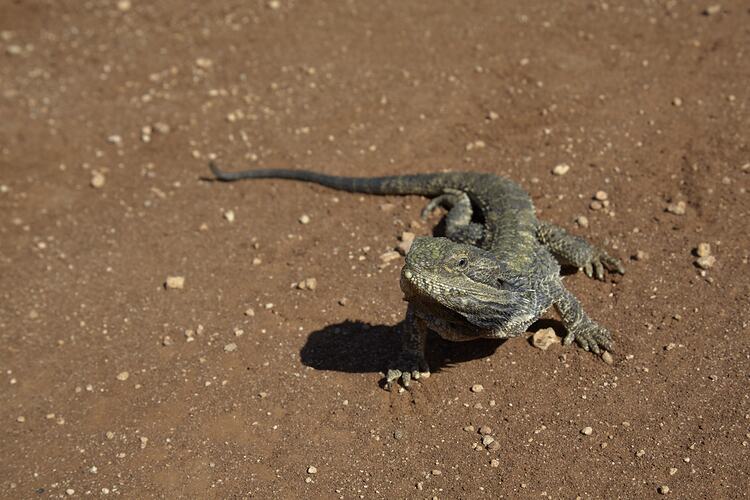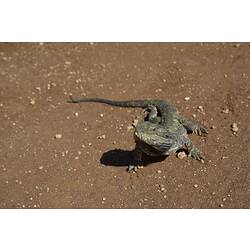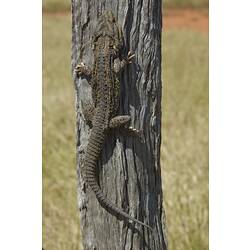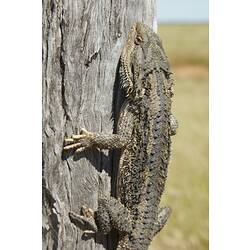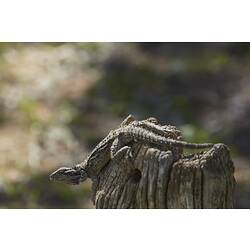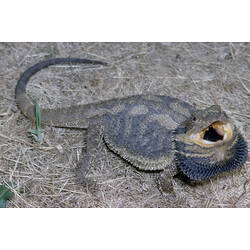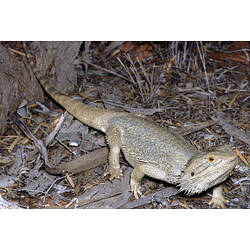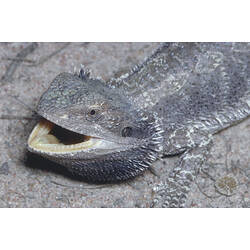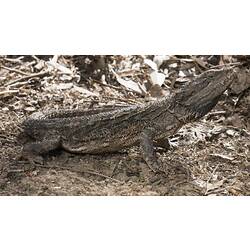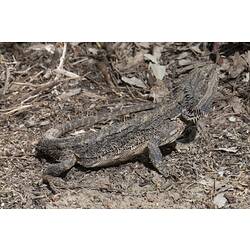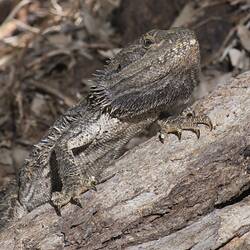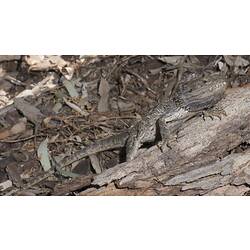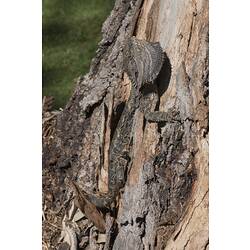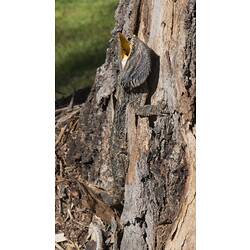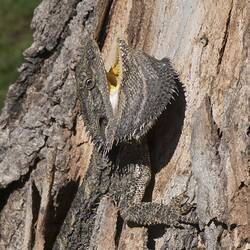General Description
Body with unorganised spines on the sides between the front and hind legs. Barbed scales under the chin form a 'beard'. Up to 25 cm long (snout-vent).
Biology
Bearded Dragons are active during the day, basking in the sun on logs or fence posts. During periods of inactivity, they shelter in burrows. Females lay a clutch of 6-35 eggs. When disturbed, Bearded Dragons will often flee to a nearby burrow under a pile of dead vegetation. When threatened, they spread their spiny beards to reveal a pink inner mouth.
Distribution
Central and eastern mainland Australia.
Habitat
Open sclerophyll woodlands or forests with places to perch such as logs and fallen branches.
More Information
-
Animal Type
-
Animal SubType
-
Brief Id
Spines on side of body, spiny 'beard' below neck.
-
Colours
Brown, Yellow
-
Habitats
-
Diet
Carnivore
-
Diet Categories
Insects, Invertebrates
-
Endemicity
-
Commercial
No
-
Conservation Statuses
CITES: Not listed, FFG Threatened List: Vulnerable, EPBC Act 1999: Not listed, IUCN Red List: Least Concern
-
Taxon Name
-
Scientific Author
(Cuvier, 1829)
-
Common Name
Bearded Dragon
-
Other Names
Jew Lizard
-
Kingdom
-
Phylum
-
Subphylum
-
Class
-
Subclass
-
Order
-
Suborder
-
Infraorder
-
Family
-
Genus
-
Species Name
barbata
